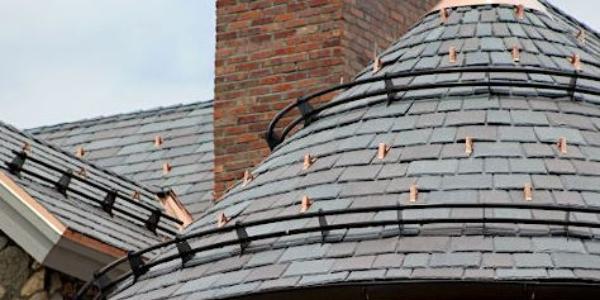Beneath the surface: Silicone or acrylic for roof restorations?

By Dani Sheehan.
Take the time to understand the benefits of roof coating types to best support the needs for your next restoration project.
Roofing contractors faced with the task of restoring low-slope roofs have a crucial decision to make when it comes to the type of coating to use. Silicone and acrylic have emerged as the two leading options. Roof coatings have become increasingly popular as a wise investment for building owners and managers looking to restore an existing roof rather than pay for an entire replacement. Roof coatings not only extend the roof’s life, but also enhance energy efficiency and reduce the environmental impact of a building. Mule-Hide Products put together a checklist to help you choose the best coating for your next project.
Both silicone and acrylic coatings share several advantages. They both contribute to extending a roof’s life, restoring it to near-new condition and delaying the need for a costly replacement. Both coatings offer the potential to be recoated, and their reflective white options contribute to energy efficiency by reducing cooling costs and regulating indoor temperatures. Mule-Hide Products offer substantial warranties for up to 20 years for both systems, further providing assurance to contractors and building owners alike.
Choosing silicone coatings
Silicone coatings excel in humid climates where ponding water is more likely due to their moisture-cure nature. They are also generally perceived as superior to other products, potentially boosting a building’s resale value.
Choosing acrylic coatings
Acrylic coatings cure quickly in arid climates, making them suitable for diverse environmental conditions. Typically, they are more cost-effective than silicone options and offer more versatility in recoating options. A roof that was coated with an acrylic coating can be recoated with either acrylic or silicone, but silicone roofs can only be recoated with silicone because acrylic-based adhesives will not adhere to silicone coatings.
Restoration is a sound investment
When choosing silicone or acrylic coatings for a roof restoration, it is important to consider environmental impact, ease of application and the specific requirements of the project. Roofing contractors should work with building owners to consider factors such as climate, cost and potential resale value. Ultimately, choosing the right coating involves weighing the shared benefits and individual advantages to ensure the success of the restoration project.
Learn more about Mule-Hide Products in their Coffee Shop Directory or visit www.mulehide.com.
About Dani
Dani is a writer for The Coffee Shops and AskARoofer™. When she's not writing or researching, she's teaching yoga classes or exploring new hiking trails.






















Comments
Leave a Reply
Have an account? Login to leave a comment!
Sign In